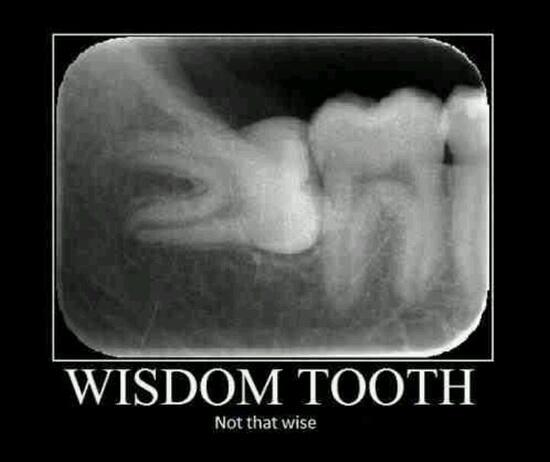Wisdom teeth are normally the last teeth to appear. This usually happens when people are in their late teen years or early twenties -- in other words, when they are older and wiser. Wisdom teeth are the third molars, at the back of the mouth. Sometimes, they can grow into place normally and never cause a problem. However, often there is not enough room for them in the mouth and they might crowd other teeth and even push sideways through the gums.

An impacted wisdom tooth is one that fails to completely rise through the gums -- the term is erupt. Wisdom teeth that only partially erupt can leave space for bacteria to enter around the tooth. Infection is a risk in these cases. Wisdom teeth that are not well aligned and become impacted are often removed.
Ideally, people should have the placement of their wisdom teeth examined between the ages of sixteen and twenty. X-rays are used to view and assess wisdom teeth that are hidden below the gums.
Removal is generally advised when wisdom teeth only partly break through the gums. Removal is also advised if there is a chance that poorly aligned wisdom teeth will damage other teeth.
But why do we have wisdom teeth if we often need to get them removed?
One theory has to do with our diets. Scientists say the diet of prehistoric humans probably required more chewing teeth. Life was probably a little rougher on the teeth back then, too. So it was good to have extras.
